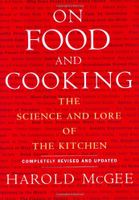Advertisement
Refining Texture and Flavor
Appears in
By Harold McGee
Published 2004
The original conche was a mechanized version of the Mayan stone grinding slab: a heavy granite roller moved back and forth over a granite bed, both mixing the ingredients together and grinding the still somewhat coarse particles to a finer size. Today the various solids are ground to the proper dimensions before conching, which now serves two main functions. First, it breaks up small aggregates of the solid particles, separates them from each other, and coats all of them evenly with cocoa butter, so that when the finished chocolate melts, it flows smoothly. Second, conching greatly improves the flavor of the chocolate, not by heightening it, but by mellowing it. The aeration and moderate heat causes as much as 80% of the volatile aromatic compounds (and excess moisture) to evaporate out of the chocolate liquor. Fortunately, many of these are undesirable volatiles, including various acids and aldehydes; acidity steadily declines during conching. At the same time, a number of desirable volatiles are augmented by the heat and mixing, notably those with roasted, caramel, and malty aromas (pyrazines, furaneol, maltol).


